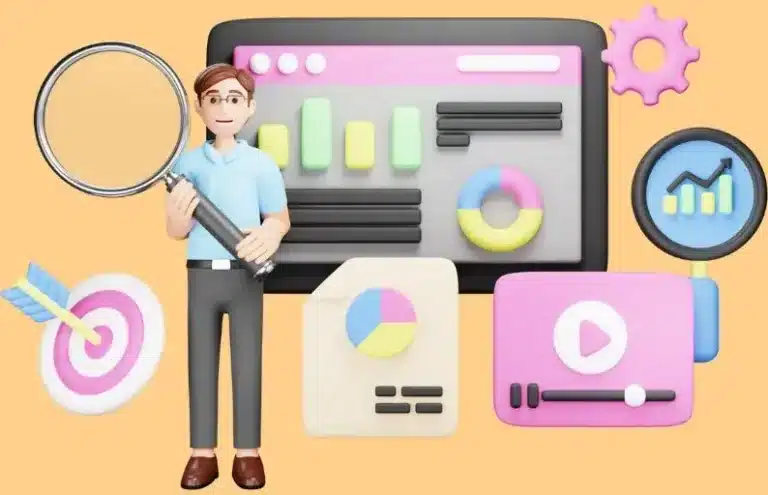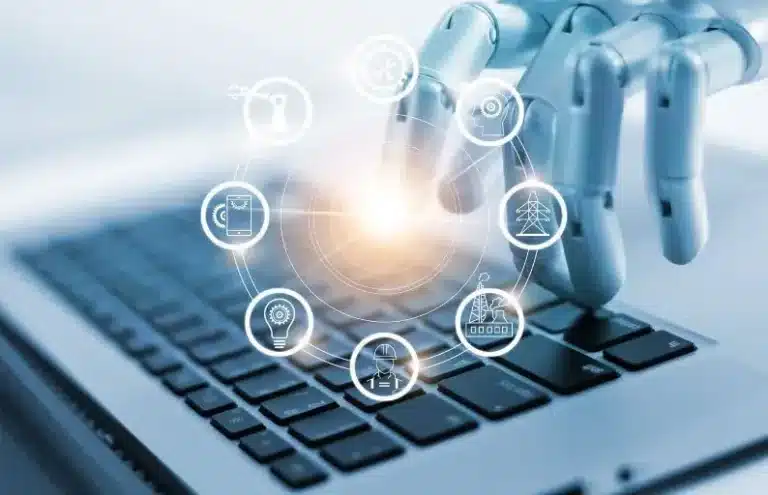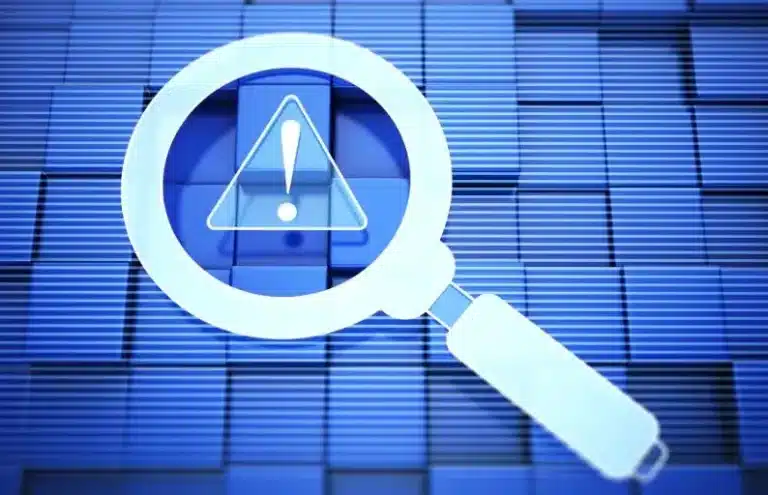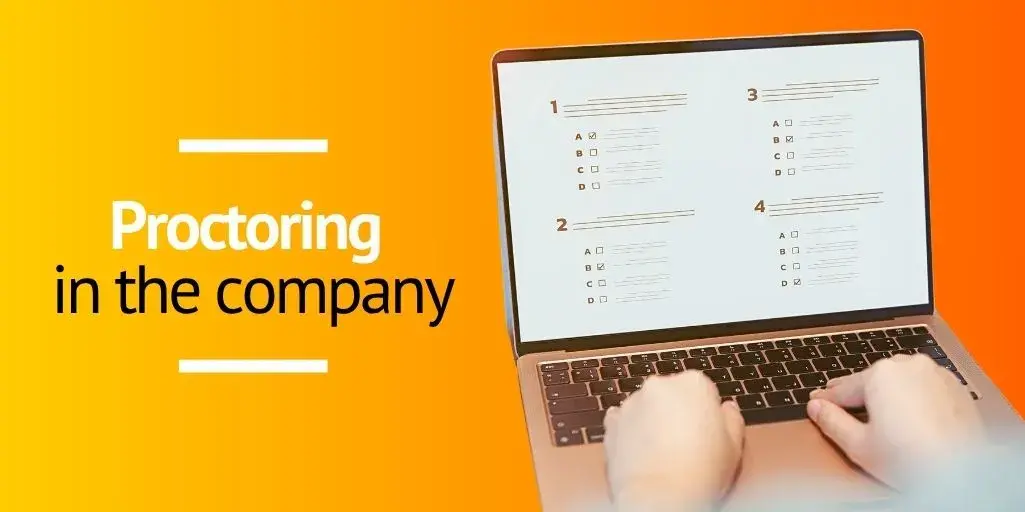In an increasingly digitalised and competitive corporate world, where the focus is on talent and individual competencies, monitoring the integrity of internal training assessments is of great importance to ensure the veracity of certificates and the honesty of employees.
Some of the current challenges companies face in proctoring exams in corporate environments are impersonation and fraud, while adapting to remote assessment models.
In this sense, proctoring has become an indispensable tool in some companies to guarantee the validity of their training and talent development programmes, as it allows remote supervision using advanced technologies such as artificial intelligence, facial recognition and behavioural analysis.
In this article we tell you what is proctoring, the implementation of proctoring in the company, what is a proctored examen, the importance of proctoring companies, what it detects and what its benefits and challenges are in the face of the pitfalls that AI facilitates.
What is proctoring?

You may ask, what is proctoring and what is a proctored exam? We adopt the term from the English word “proctor”, which is the person in charge of supervising examinations and ensuring compliance with standards. Proctoring, then, refers to the techniques of remotely monitoring assessments or examinations to ensure their integrity. But many companies do not know what is online proctored exam.
For this purpose, tools and technologies such as artificial intelligence, facial recognition, behavioural analysis or real-time recording via webcam are used to monitor the people in front of the screen and ensure that they follow the established rules.
This remote monitoring aims to detect irregular movements, confirm the identity of the person being examined, check if there are other people in the room and even observe suspicious eye movements.
Many proctoring tools can be incorporated directly into the e-learning platform selected for the course and remote assessment. An example of such a tool is Smowl, a proctoring software that can be integrated directly into LMSs.
Benefits of proctoring in corporate training
- Ensures the integrity and credibility of internal certifications: proctoring companies can certify that their employees have completed training in a legitimate way, confirming that the proctoring certifications obtained are valid and in line with each employee's skills.
- Facilitates remote assessments without compromising quality: being able to monitor remotely makes it easier for employees to take courses and assessments anywhere in the world without compromising quality, which is very useful in the age of hybrid and remote working.
- Facilitates the scalability of training programmes: it facilitates the possibility of expanding training to other regions and reaching employees who do not work face-to-face.
- Reduce costs and optimise logistics associated with face-to-face assessments: It may seem obvious, but by eliminating the need for physical classrooms, travel and face-to-face supervisors, companies can reduce the logistics and costs associated with training.
- Reduce potential for human error in supervision: This allows for more objective supervision, monitoring movements on the screen and in the examinee's environment that a person might miss.
- Improve the user experience: reduces the stress of taking an exam in person and allows assessments to be adapted to the employee's schedule, as there is no need to rely on a physical examiner.
Types of proctoring

Live monitoring
What is remote proctoring? In this case, the company has a person on the other side of the screen who monitors the evaluation live with video and audio. This makes it possible to monitor and intervene at any time if any suspicious behaviour is detected or the employee needs assistance with a technical problem.
This method has the advantage of being able to communicate with the examinee immediately wherever he/she is and to solve any doubts or problems, although it is not ideal when it comes to observing a large number of people at the same time, as this would require multiple supervisors and would generate additional costs.
AI-based automated monitoring
This is another training evaluation software and it is the most advanced method, with the help of technology, it is possible to monitor the exam completely autonomously. Algorithms and artificial intelligence can detect suspicious behaviour, such as looking away from the screen, making strange movements or using mobile devices to find the answers.
The biggest advantage of this method is that it completely eliminates the need for a person analysing the image and allows a large number of employees to be monitored at the same time. While the technology is not perfect, it may be able to detect legitimate behaviours such as shifting position or hair being pulled back as irregular.
Data protection
Using proctoring techniques that require video, audio and screen recording involves the collection of sensitive information and data such as gestures, behaviour patterns and even in some cases biometric data.
For this reason, proctoring is subject to strict data protection regulations. The Organic Law 3/2018 on the Protection of Personal Data and Guarantee of Digital Rights (LOPDGDD) in Spain, comprises all these regulations on data processing, digital rights and privacy in the workplace.
The exam proctor companies must inform and justify the use of monitoring tools such as proctoring, what data will be collected, what it will be used for, who will store it and for how long. This should be explicitly stated in a form, an opt-in box before the start of the assessment or in the employment contract so that employees can make an informed decision. Failure to comply with this can lead to penalties and fines of millions of dollars for companies.
If an employee wishes to revoke his or her acceptance and ask for his or her data to be deleted, he or she has the right to do so. To do so, he or she can contact the department in charge of the company or complain to the Spanish Data Protection Agency (AEPD).
Proctoring as a solution to AI-facilitated cheating

The advent of artificial intelligence a few years ago revolutionised the way we get information. Thanks to tools such as ChatGPT, advanced writing assistants and content generators, it is increasingly easy to get immediate answers to any doubt or question.
Aside from being the ideal assistants, these tools have also given rise to new forms of exam and certification fraud, making it easier for students and employees to find answers in real time without being detected. And while AI plagiarism detectors exist, proctoring software also presents itself as a solution to exam cheating. This is why best practices in proctoring should be taken into account.
Some of these more advanced technologies even use voice and video deepfakes that could enable impersonations in remote exams. Other more modern AI devices, such as Ray-Ban Meta smart glasses or hidden voice assistants, can also be used to obtain answers without arousing suspicion.
In this sense, proctoring systems are evolving to deal with all these increasingly sophisticated and creative traps. An advanced proctoring tool can detect suspicious eye movements, for example, if someone looks up answers on a mobile phone while taking the test, it can detect irregular eye movements.
They can also detect changes in posture, movements and facial expressions, for example, if a person stands up, steps out of the frame or appears to be talking to someone else in the room, the tool will flag these behaviours as suspicious.
Abnormal use of the keyboard, mouse or unusual response patterns can also be indicators that something is not quite right. For example, if the examinee tries to open another tab during the test or takes long pauses before entering a perfectly written and structured answer, this could be a sign that he or she has copied content from elsewhere.
In addition to this, proctoring tools are constantly improving and optimising, learning and identifying atypical behaviour based on the response patterns of other users.
Could AI be a double-edged sword in proctoring?

While artificial intelligence has reshaped proctoring, making it more efficient and accurate in detecting irregular behaviour, it also poses some challenges in terms of false positives, privacy concerns and biases in algorithms.
Erroneous detection of anomalies
Artificial intelligence, while highly advanced, is not perfect. It can sometimes generate false positives, mistakenly detecting legitimate movements and flagging them as suspicious.
For example, an employee might move out of discomfort, have a family member in the room, or be wearing glasses where an erroneous eye movement is detected because of a reflex. This could result in an unfair sanction or suspension from the examination.
Privacy issues
Proctoring tools collect and store highly sensitive information. This could raise concerns about possible leaks if they are not well protected or if there is improper handling of this data.
In addition, some tools request access to the camera, microphone and screen, which many may consider excessive and invasive. In work environments, this can give the impression of extreme surveillance by the company and create discomfort.
Algorithmic biases
Algorithms may have been trained on certain population groups more than others. This less diverse database may end up giving inaccurate or misleading results. For example, diseases that have not been considered, such as certain disabilities, ADHD or some nervous tics, may cause a person to move more than usual.
In addition, studies by the US National Institute of Standards and Technology suggest that there is a bias between lighter and darker-skinned people, with facial recognition being less accurate in the latter.
Although proctoring and artificial intelligence technology are not perfect and still face some challenges, it is undeniable that, in the context of internal training in proctoring companies, it has become a key ally in guaranteeing the validity and credibility of certifications, ensuring that employees actually possess the skills and competencies for which they have been tested.
